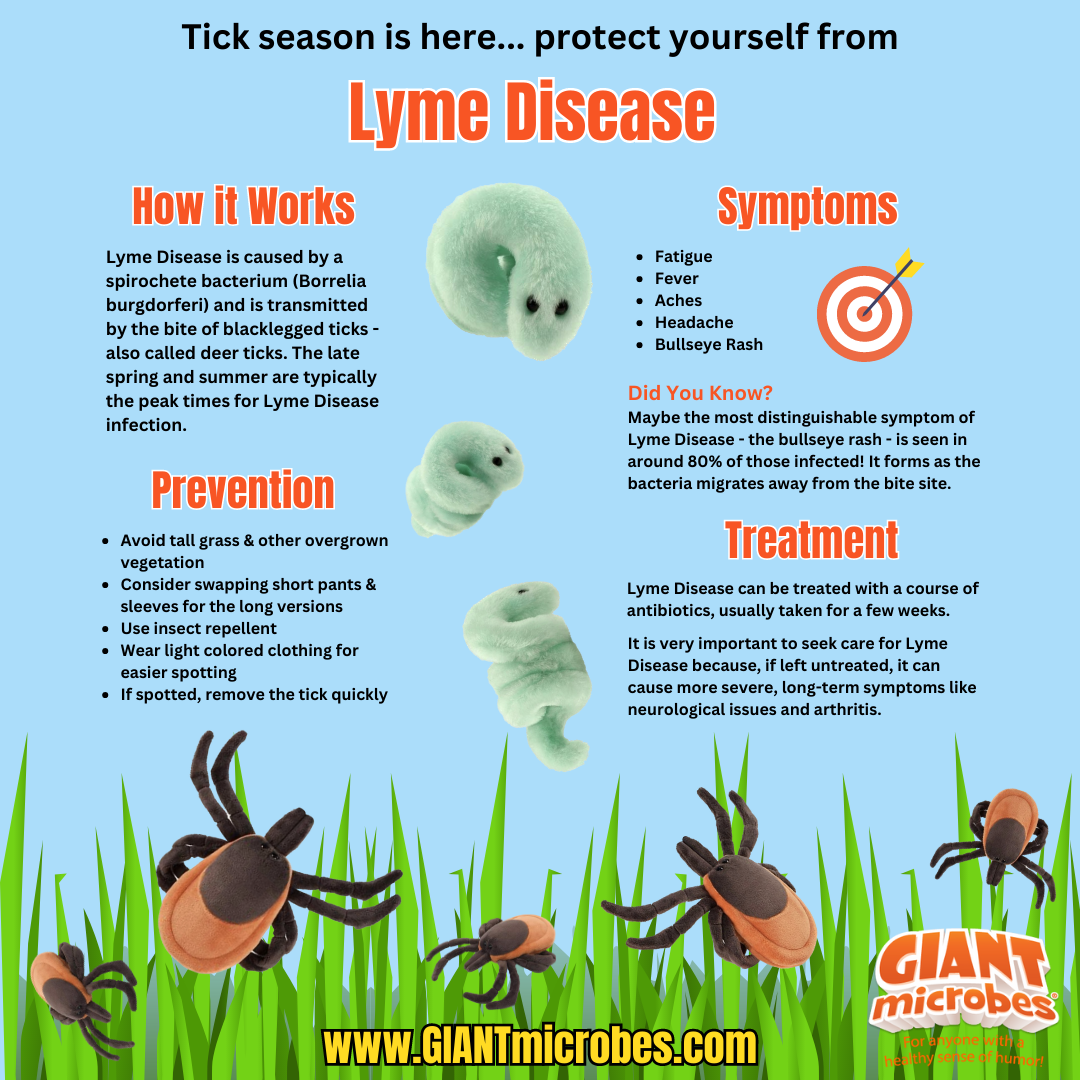Lyme Disease Awareness Month
May is National Lyme Disease Awareness Month. Learn all about Lyme Disease with GIANTmicrobes.
FACTS: First identified in the 1970's in the United States near Lyme, Connecticut, Lyme Disease is now one of the most commonly reported tick-borne illnesses.
The Borrelia burgdorferi bacterium was identified as the cause of the disease in the early 1980's, though DNA-analysis of rodents and ticks in museum collections demonstrates that the bacterium has existed for centuries, if not millennia. Blacklegged ticks (or deer ticks) pass the bacterium from small animals to humans.
Although common symptoms include aches, fevers, and fatigue, the signature symptom is an expanding, bull's-eye rash (or EM, erythema migrans). Typically, the rash spreads out from the site of the tick bite, appearing anywhere from a few days to a month after the bite. As the rash grows, the origin fades leaving a ring that resembles a bull's-eye.
When the signature rash is present and tick-exposure is presumed, antibiotic treatment is recommended. However, the rash develops in only 80% of cases, so where symptoms and tick-exposure warrant further medical examination, laboratory testing is also available.
Untreated, Lyme disease can lead to arthritis, facial paralysis, meningitis, and even cognitive disruptions such as memory loss and mood changes. So when you're in the country, keep an eye out for ticks, or you could end up a target.
NAME: The name Lyme Disease comes from the outbreak in Lyme, CT. The species name Borrelia burgdorferi comes from the scientist who isolated it. WHERE IT LIVES: Tick bites. People who have it are not contagious. SYMPTOMS: Circular redness around the bite and flu-like symptoms. If the disease progresses, it can cause problems in major parts of the body like the heart, joints, and nervous system. CURE: Antibiotics HISTORY: In 1975 Allen Steere discovered the disease after an outbreak of rheumatoid arthritis in Lyme, CT. In 1982 Willy Burgdorfer isolated the bacterium in ticks that caused the disease. BIG OUTBREAKS: 1975 - First outbreak in Lyme, CT.
1982-1983 - 210 infected in Westchester County, NY.
2014 - Lyme infections increased 12% in New York from 2013.FASCINATING FACTS: It is most common in the Northeast US, infected ticks typically come from deer and it's the most common tick inflicted illness.







